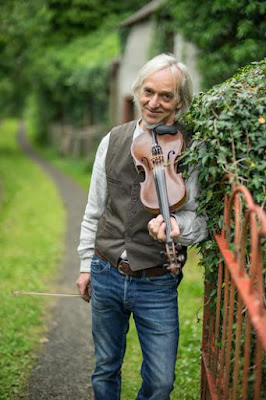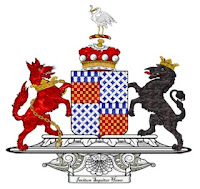 |
| Mountpottinger Old Church ca 2021 (Image: Rev Dr David Steers) |
It has been a long time since I went to a concert.
The last occasion was probably a classical concert with the Ulster Orchestra at the Ulster Hall in Belfast.
A year ago I went to see Tchaikovsky's masterpiece, The Nutcracker, at the Grand Opera House.
When it was brought to my notice that Willie Drennan and Friends were performing at the Little Theatre in the former Mountpottinger Unitarian Presbyterian Church, Belfast, this was a show I didn't wish to miss.
 |
| Mountpottinger Old Church ca 2021 (Image: Rev Dr David Steers) |
Mountpottinger Old Church is conspicuous from Albertbridge Road, though it's actually at 1a Castlereagh Street, which runs from 124 Albertbridge Road to 68 Beersbridge Road.
The former church is small. There's now a café in one of the rooms, and the little theatre is in the former nave.
 |
| Mountpottinger Unitarian Church pre-1899 (Image: Adrian Moir) |
In 1862 a room at the site of a local felt works was lent by Francis Ritchie for the purpose of giving religious teaching to some uncared-for children in the Mountpottinger district.
The foundation stone for the church was laid on the 16th May, 1874, and the church was opened in the following year.
It has been described as being constructed in the "New Early English Gothic" style.
 |
| Willie Drennan and Friends (Timothy Ferres, 2022) |
LAST NIGHT (Friday, October 21st, 2022) I parked the two-seater at The Mount, and walked the short distance to the Little Theatre, where I took an old wooden pew, so to speak.
Fear not, Readers, there are large cushions on the pews for the benefit of needy posteriors!
The stage was set with accordion, fiddle, trombone, fife, acoustic double bass, mandolin, guitars, tin whistles, drums; and a beautiful Celtic harp.
At about seven-forty Willie, raconteur extraordinaire, fiddler, tin whistler, mandolin player, and, of course, legendary Lambeg drummer, came on to the stage.
Willie has a rare talent for being so spontaneous on the stage that you feel as if you are in his sitting-room or barn.
He's a great spinner of yarns ~ the Ulster Muse!
Willie was supported by his fellow musicians and dancers, including John Trotter, a remarkable trombonist, not to omit accordionist.
Fiona Trotter sang dulcetly beside him.
There were fourteen performers in all, including the marvellous young Scottish dancer, Emma Miller; the acclaimed Irish dancer and Celtic harpist, Larissa Fleck; and of course the delightful twin sisters Lucinda and Susan McGuigan from Cullybackey in County Antrim (they're on YouTube with Little Drummer Boy).
The Celtic harp is considerably smaller than the orchestral harp, and its sound is truly mellifluous.
Larissa played the Londonderry Air beautifully.
 |
| Willie Drennan (Image: Belfast Telegraph) |
Willie joked that he called it the Londonderry-Derry-Derry-Londonderry Air.
It's also known as "Danny Boy."
Willie knew that I was coming along, so when he spotted me at my pew he beckoned me up on to the stage for a photograph with them all.
All in all a very enjoyable performance and I hope the Ulster Muse and his friends get the attention they deserve.
I am grateful to the Rev Dr David Steers and Adrian Moir for information and images relating to Mountpottinger Non-Subscribing Presbyterian Church.





